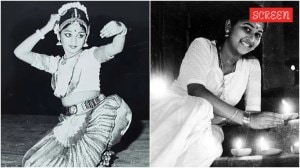Hills are Alive
Its an act of faith,an escape to the unfamiliar substituting as a refuge from loss and grief.
Among Indias hill stations,the only ones that have managed to preserve their original character are those like Ranikhet,Lansdowne,Kasauli or Dalhousie,and only because they are army cantonments where building activity is strictly monitored and outsiders are kept at arms length. What adds to their attraction apart from the natural beauty are the residents a mix of retired army officers and bureaucrats,pensioners who moved to the hills,local businessmen,serving officials,authors,teachers,urban escapees and the hill folk.
Then,of course,there are people like Maya,the protagonist of this novel,whose husband dies while trekking in the Himalayas. And she finds herself drawn to its folds in a desperate search for his remains and the backstory to his last climb and companions. Its an act of faith,an escape to the unfamiliar substituting as a refuge from loss and grief. Instead,it becomes all too familiar as the dual job she takes up and the landlord she acquires give her a centrality in the lives and loves of those around her. After Atlas of Impossible Longing,this is Roys second novel.
Apart from capturing the sights,sounds and character of a hill station Ranikhet in this case she also uses the eccentricities of the locals to fashion a tale of great beauty and depth. What makes the setting more authentic is that she writes in familiar characters like Kipling and Corbett,Edwina Mountbatten and Nehru,into the plot to combine echoes of the Raj with heartbreak and nostalgia,love and loss. The tale delights as much for the allure of the writing as for its very hill-like twists and turns.
Schoolteachers,pickle factories,young lovers,a
gin-soaked aristocrat as a landlord and Edwina-Nehru love letters are all blended into a background of nostalgia and natural beauty. Roys literary boundaries extend further as she brings in some hard social and political reality into a narrative that would otherwise have been somewhat rose-tinted and localised. There are characters we can remember,from Diwan Sahab the landlord to loquacious bureaucrats.
Roy does not take risks with style or structure and the book sags towards the middle,but she manages to convey continuity and change with conviction and against a memorable backdrop. Above all,she brings alive the sense of community which is so vital to small,thinly populated and intimate hill stations like Ranikhet.



- 01
- 02
- 03
- 04
- 05



























